 W
WThe Indonesian National Revolution, or the Indonesian War of Independence, was an armed conflict and diplomatic struggle between the Republic of Indonesia and the Dutch Empire and an internal social revolution during postwar and postcolonial Indonesia. It took place between Indonesia's declaration of independence in 1945 and the Netherlands' recognition of Indonesia's independence at the end of 1949.
 W
WThe 3 July Affair in 1946 was a political upheaval in the then newly formed Republic of Indonesia. The Prime Minister, Sutan Sjahrir, was kidnapped by factions within the military opposing the Republic’s negotiations with the Dutch during the Indonesian National Revolution. It ended with the release of Sjahrir and a re-structure of both the Republican government and the army.
 W
WThe APRA coup d'état was a coup d'état by Raymond Westerling's Legion of Ratu Adil (APRA) to capture Bandung and Jakarta, and to overthrow Sukarno’s unitary Republic of Indonesia. Westerling was a demobilised Dutch Captain of the KNIL, who sought to preserve the federal Republic of the United States of Indonesia, which retained the support of the Netherlands and various minority elements. Westerling's forces succeeded in capturing Bandung in the early hours of 23 January 1950.
 W
WThe Bandung Sea of Fire was the deliberate burning of much of the southern side of the city of Bandung by retreating Indonesian Republican troops during the Indonesian National Revolution.
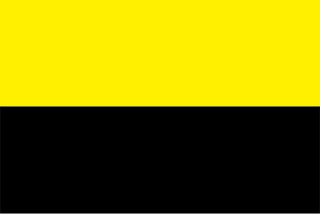 W
WBanjar Region was an autonomous area formed in the southeastern part of Indonesian island of Borneo by the Netherlands in 1948 as part of an attempt to re-establish the colony of the Dutch East Indies during the Indonesian National Revolution. Banjar became a constituent part of the United States of Indonesia in 1949. The chairman of the Banjar Council was Mohammed Hanafiah. The region was dissolved on 4 April 1950 and combined with Great Dayak and the Southeast Borneo Federation to form Kalimantan Province. Today, the territory of the former region comprises around two thirds of South Kalimantan Province.
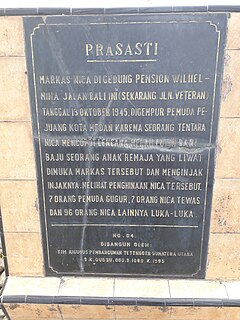 W
WThe Battle of Medan, known locally as the Battle for the Medan Area was a battle between Allied forces and the Indonesian Army in Medan, North Sumatra, and its surrounding area during the Indonesian National Revolution.
 W
WThe Battle of Semarang, in Indonesia also known as Pertempuran Lima Hari was a clash between Japanese forces of the Sixteenth Army and Indonesian forces consisting of People's Security Agency personnel and pemuda in October 1945 at the city of Semarang, Central Java. The battle is considered as the first major clash involving the Indonesian military.
 W
WBersiap is the name given by the Dutch to a violent and chaotic phase of the Indonesian National Revolution following the end of World War II. The Indonesian word bersiap means 'get ready' or 'be prepared'. The Bersiap period lasted from August 1945 to December 1946.
 W
WThe Central Indonesian National Committee or KNIP, was a body appointed to assist the president of the newly independent Indonesia. Originally purely advisory, it later gained assumed legislative functions. The Working Committee of the KNIP became part of the People's Representative Council when Indonesia became a unitary state in 1950.
 W
WCisarua is a location and district in the Bogor Regency, located in the province of West Java, with a population of 127,096 in 2020. The district is famous for its mild climate, tea fields, and stunning views, being located in a rather high altitude.
 W
WThe Cumbok affair, also known as the Cumbok War, was a series of battles that took place in the Pidie Regency of Aceh in the Dutch East Indies between 2 December 1945 and 16 January 1946. Conflict broke out between ulama (teungku) who supported the Proclamation of Indonesian Independence and had united in the Persatuan Ulama Seluruh Aceh (PUSA), and the local ulèëbalang aristocracy (teuku) who continued to support Dutch colonial rule, causing a revolution in the social fabric of the Acehnese people at the time.
 W
WThe Denpasar Conference was held from 7–24 December 1946 at the Hotel Bali and resulted in the establishment of the State of East Indonesia, part of the United States of Indonesia. It was at this conference that the Dutch government stated its position that control of Western New Guinea would not be handed over at the same time as the rest of the Dutch East Indies.
 W
WThe Dutch–Indonesian Round Table Conference was held in The Hague from 23 August to 2 November 1949, between representatives of the Kingdom of the Netherlands, the Republic of Indonesia and the Federal Consultative Assembly, representing various states the Dutch had created in the Indonesian archipelago.
 W
WThe East Sumatra revolution, also known as the East Sumatra Social Revolution, began on 3 March 1946. Across 25 "native states", many sultanates were overthrown and mass killing of members of the aristocratic families were performed by armed pergerakan groups. To the opportunistic pergerakan militants, the revolutionary movement was seen as one of the means for East Sumatra to be freed from colonial overlordship and to join the larger Indonesian National Revolution. Participants of the revolution were believed to be provoked by leaders to kill aristocrats and create violence. These belligerents had three prime objectives: to eliminate the sultans and aristocrats, to seize their wealth and to eliminate the region's feudal social structure. The revolution brought about the formation of the State of East Sumatra), which was dissolved when the region became part of the Indonesian republic.
 W
WThe Emergency Government of the Republic of Indonesia, (PDRI) was established by Indonesian Republicans after the Netherlands occupied Yogyakarta in Central Java, the location of the temporary Republican capital. It was located in the city of Bukittinggi and led by Sjafruddin Prawiranegara.
 W
WThe Faciliteitenwet, also known as the "Act on the Position of Moluccans", regulates the position of Moluccans living in the Netherlands who do not hold Dutch nationality.
 W
WThe Federal Consultative Assembly, (BFO) was a committee established on 8 July 1948 to discuss the form of the planned federal United States of Indonesia. Its membership comprised the leaders of the various federal states established by the Dutch in the areas they occupied following their attack on the areas of Indonesia controlled by republican forces during the Indonesian National Revolution (1945–1949). It took part in negotiations with the Dutch in August and September 1948, and participated in the Dutch–Indonesian Round Table Conference at which the Dutch agreed to hand over sovereignty to the United States of Indonesia.
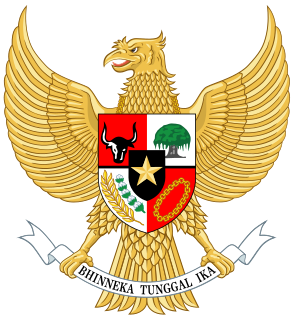 W
WThe first Amir Sjarifuddin Cabinet was the fifth Indonesian cabinet and was in office from 3 July to 11 November 1947.
 W
WThe First Division 7 December was a division of the Royal Netherlands Army, active from at least 1946 to 2004. It was sent to Indonesia in 1946 to restore "peace, order and security" after the proclamation of Indonesian Independence in 1945.
 W
WThe First Hatta Cabinet, also known as the Presidential Cabinet, was Indonesia's seventh cabinet. It was formed by Vice President Mohammad Hatta, who was instructed to do so by President Sukarno on 23 January 1948, the same day the previous cabinet was declared dissolved. Following the second Dutch military aggression, when the republican capital of Yogyakarta was seized and most of the cabinet arrested, much of the cabinet was captured and sent into exile, although it was not formally disbanded. After the political leadership returned effective 13 July 1949 the cabinet continued its mandate until it was reshuffled on 4 August.
 W
WThe first Sjahrir Cabinet was the second Indonesian cabinet, named after the Prime Minister. It served from November 1945 to February 1946.
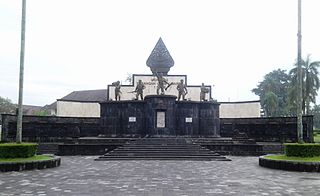 W
WThe General Offensive of 1 March 1949 was a military offensive during the Indonesian National Revolution.
 W
WThe Gerbong maut incident, also known as the Bondowoso death train, is a historical incident that occurred on November 23, 1947 in Bondowoso, Indonesia during Dutch occupation.
 W
WGreat Dayak was a component entity of the United States of Indonesia in Dayak regions on the island of Borneo. It was established on 7 December 1946 with a temporary capital at Bandjermasin (Banjarmasin). Great Dayak was dissolved on 18 April 1950 and became part of Kalimantan Province which was formed on 14 August 1950 with its capital also at Banjarmasin. Following the division of Kalimantan Province, the former territory of Great Dayak was assigned first to South Kalimantan in 1956 and then Central Kalimantan in 1957 where it remains today.
 W
WThe Republic of Indonesia was a federal state (negara bagian) of the United States of Indonesia (RUSI) which was established on 27 December 1949. The territory of the state included parts of Java and most of Sumatra, and its capital was Yogyakarta. The acting president of the Republic was Assaat and the prime minister was first Susanto Tirtoprodjo until 16 January 1950, then Abdul Halim. On 17 August, the United States of Indonesia ceased to exist as the last of the component states dissolved themselves into a unitary Republic of Indonesia encompassing the entire territory of the former Dutch East Indies except for West Papua.
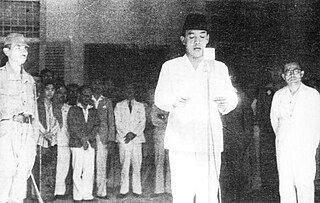 W
WThe Proclamation of Indonesian Independence was read at 10:00 AM in the morning of Friday, August 17, 1945. The declaration marked the start of the diplomatic and armed resistance of the Indonesian National Revolution, fighting against the forces of the Netherlands and pro-Dutch civilians, until the latter officially acknowledged Indonesia's independence in 1949. The document was signed by Sukarno and Mohammad Hatta, who were appointed president and vice-president respectively the following day.
 W
WThe Invasion of Ambon was a combined Indonesian military operation which aimed to seize and annex the self proclaimed Republic of South Maluku.
 W
WThe National Main Heroes Cemetery in Kalibata (Indonesian: Taman Makam Pahlawan Nasional Utama, Kalibata, colloquially known as Kalibata Heroes Cemetery is a military cemetery in Kalibata, South Jakarta, Indonesia. It was built in 1953 and opened on 10 November 1954. Bacharuddin Jusuf Habibie is the first Indonesian President to be buried on the cemetery when he died on 11 September 2019. Former Indonesian foreign minister Agus Salim, who died 6 days before the cemetery was opened, was the first state leader buried on the cemetery. There were also 121 corpses moved from Heroes Cemetery in Ancol.
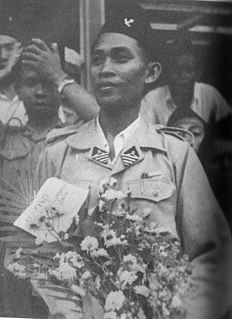 W
WThe Kalimantan Physical Revolution was an armed conflict between Indonesian nationalists in and pro-Dutch forces in Dutch Borneo following the end of the Japanese occupation of the Dutch East Indies and the 1945 Proclamation of Indonesian Independence by Sukarno and which lasted until the Dutch withdrew from most of Indonesia in 1949. It can be considered a regional conflict in the larger Indonesian National Revolution. After the surrender of the Japanese at the end of World War II, allied forces took control of the Dutch East Indies, including Dutch Borneo. The return of Dutch authorities however, was rejected by majority of native population, including in Borneo, resulting in various regional armed conflicts between Royal Netherlands East Indies Army and Indonesian nationalist forces. Allied military forces in Borneo were in a strong position after an early conflict in August 1945, and were able to pacify local nationalist uprisings and impose a blockade to prevent military aid and exchange in personnel from nationalist strongholds in Java and Sumatra. Later, nationalists with connections to Borneo were able to breach the military blockade to provide information of revolutionary events in Java and Sumatra, declaring Kalimantan as inseparable part of the new Indonesian republic.
 W
WThe Legion of Ratu Adil, also known as Angkatan Perang Ratu Adil (APRA) or the Just King Legion was a pro-Dutch militia and private army established during the Indonesian National Revolution. It was founded by the former KNIL Captain Raymond Westerling following his demobilisation on 15 January 1949. The militia's name was derived from a passage from the medieval Book of Prophecies of Jojo Boyo which prophesied the coming of a Ratu Adil or Just King/Queen who would be of Turkish descent and come to save the people of Java and establish universal peace and justice. With his mixed Turkish heritage in mind, Westerling used the myth of the Just King to create a following.
 W
WThe Linggadjati Agreement was a political accord concluded on 15 November 1946 by the Dutch administration and the unilaterally declared Republic of Indonesia in the village of Linggajati, Kuningan Regency, near Cirebon in which the Dutch recognised the republic as exercising de facto authority in Java, Madura and Sumatra.
 W
WThe Madiun Affair, known locally as the Communist Party of Indonesia rebellion of 1948, was an armed conflict between the government of the Self-proclaimed Republic of Indonesia and the left-wing opposition group, Front Demokrasi Rakyat during the Indonesian National Revolution. The conflict began on 18 September 1948 in Madiun, East Java, and ended three months later when most FDR leaders and members were detained and executed by TNI forces.
 W
WThe State of Madura was a federal state (negara bagian) formed on the Indonesian island of Madura by the Netherlands in 1948 as part of an attempt to reestablish the colony of the Dutch East Indies during the Indonesian National Revolution. It included Madura and neighbouring islands that now form part of the current province of East Java.
 W
WThe Makassar Uprising was a skirmish in Makassar, Sulawesi between former Royal Dutch East Indies Army soldiers under Captain Andi Aziz and the Republic of the United States of Indonesia government. The purpose of the uprising was to revolt against the incorporation of the Indonesian federated "states" into the Indonesian Republic. However, the uprising was quashed in a little over two weeks when troops under Lieutenant Colonel Suharto and Colonel Alexander Evert Kawilarang arrived at Makassar to find only light resistance.
 W
WThe Malino Conference was organised by the Dutch in the Sulawesi town of Malino from 16–25 July 1946 as part of their attempt to arrange a federal solution for Indonesia. From the end of World War II, Indonesian Republicans had been trying to secure Indonesian Independence from the Dutch colonial control.
 W
WThe Mergosono massacre was committed by Indonesian revolutionaries against members of the Chinese community of Mergosono in Malang, East Java on 31 July 1947 during the Indonesian National Revolution. Suspected of espionage for the Dutch colonial authorities, 30 Chinese men and women were rounded up, tortured, and burned, before being buried at a former noodle factory. The bodies were exhumed and reburied in a mass grave on 3 August the same year.
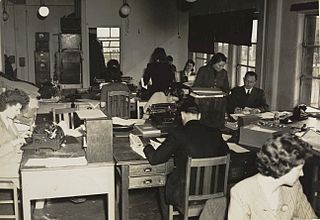 W
WThe Netherlands Indies Government Information Service (NIGIS) was a civil secret service and propaganda organisation based in Australia, during and after World War II.
 W
WOperation Kraai was a Dutch military offensive against the De facto Republic of Indonesia in December 1948 after negotiations failed. With the advantage of surprise the Dutch managed to capture the Indonesian Republic's temporary capital, Yogyakarta, and seized Indonesian leaders such as De facto Republican President Sukarno. This apparent military success was however followed by guerrilla warfare, while the violation of the Renville Agreement ceasefire diplomatically isolated the Dutch, leading to the Dutch–Indonesian Round Table Conference and recognition of the United States of Indonesia.
 W
WOperation Product was a Dutch military offensive against areas of Java and Sumatra controlled by the Republic of Indonesia during the Indonesian National Revolution. It took place between 21 July and 4 August 1947. Referred to by the Dutch as the first "Politionele acties". In Indonesia, the military offensive is more commonly known in history books and military records as Agresi Militer Belanda I.
 W
W"Our Struggle" was a pamphlet written late October 1945 by Indonesian independence leader Soetan Sjahrir. It was pivotal in redirecting the Indonesian national revolution.
 W
WPao An Tui sometimes incorrectly spelled Po An Tui or Poh An Tui, was a self-defense force of the Chinese-Indonesian community during the Indonesian Revolution (1945–1950). The group has often been accused of pro-Dutch sympathies in the struggle for Indonesian independence from Dutch colonial rule.
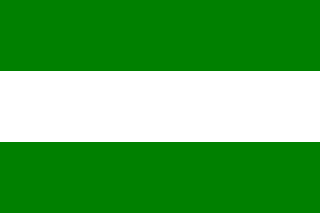 W
WThe State of Pasundan was a federal state (negara bagian) formed in the western part of the Indonesian island of Java by the Netherlands in 1948 following the Linggadjati Agreement. It was similar to the geographical area now encompassed by the current provinces of West Java, Banten and Jakarta.
 W
WPolitionele Acties refers to two major military offensives undertaken by the Netherlands on Java and Sumatra against the Republic of Indonesia during its struggle for independence in the Indonesian National Revolution. In Indonesia they are known collectively as Agresi Militer Belanda, although the term Aksi Polisionil is also known.Operation Product took place from 21 July until 5 August 1947. Operation Kraai took place from December 1948 until January 1949.
 W
WThe Presidential Cabinet was the first cabinet established by Indonesia following the 17 August 1945 Indonesian Declaration of Independence. It comprised 20 ministers and four officials. Its term of office ran from 2 September to 14 November 1945.
 W
WThe Rawagede massacre, was committed by the Royal Netherlands East Indies Army on 9 December 1947 in the village of Rawagede. Forces of the Royal Netherlands East Indies Army were battling Indonesian Republican army fighters TNI and militia forces seeking independence for Indonesia. Almost all males from the village, amounting to 431 men according to most estimates, were killed by the Royal Netherlands East Indies Army, since the people of the village would not tell them where the Indonesian independence fighter Lukas Kustaryo was hiding.
 W
WThe Rengat massacre was committed by the Royal Netherlands East Indies Army on 5 January 1949 in Rengat, Riau during Operation Kraai. Following the capture of the town, paratroopers of the Korps Speciale Troepen under lieutenant Rudy de Mey subjected confirmed and suspected TNI militants, civil servants, and ordinary townspeople to looting, rape, and summary execution. Bodies were disposed of in the Indragiri River.
 W
WThe Renville Agreement was a United Nations Security Council-brokered political accord between the Netherlands, which was seeking to re-establish its colony in South East Asia, and Indonesian Republicans seeking to secure Indonesian independence during the Indonesian National Revolution. Ratified on 17 January 1948, the agreement was an unsuccessful attempt to resolve the disputes that arose following the 1946 Linggadjati Agreement. It recognised a cease-fire along the Status Quo Line or so-called "Van Mook Line", an artificial line which connected the most advanced Dutch positions.
 W
WThe second Amir Sjarifuddin Cabinet was Indonesia's sixth cabinet and was the result of a reshuffle to allow for the entry of the Masyumi Party, which gained five posts. The cabinet lasted only two months and eleven days, from 12 November 1947 to 23 January 1948, after Masyumi withdrew its ministers in protest at the Renville Agreement the government signed with the Dutch.
 W
WThe second Hatta Cabinet was Indonesia's ninth cabinet. It was formed after the Indonesian leadership, which had been imprisoned by Dutch forces, returned to the capital, Yogyakarta. It served from 4 August to 14 December 1949.
 W
WThe second Sjahrir Cabinet was the third Indonesian cabinet and the second formed by Sutan Sjahrir. It served from March to June 1946.
 W
WThe Siege of Surakarta was a military campaign during the Indonesian National Revolution. The Indonesian Republican forces (TNI) briefly infiltrated the city of Surakarta before being repulsed by Dutch special forces (RST). Despite the defeat, the battle, together with an earlier attack on Yogyakarta, provided a morale boost for the Indonesians.
 W
WSoutheast Borneo Federation was an autonomous area formed in the southeastern part of Indonesian island of Borneo by the Netherlands in 1948 as part of an attempt to re-establish the colony of the Dutch East Indies during the Indonesian National Revolution. Southeast Borneo became a constituent part of the United States of Indonesia in 1949. The Federation was dissolved on 18 April 1950 and combined with Great Dayak and Bandjar to form South Kalimantan Province.
 W
WThe State of East Java was a federal state (negara bagian) formed on the Indonesian island of Java by the Netherlands in 1948. It subsequently became a component of the United States of Indonesia, but merged into the Republic of Indonesia on 9 March 1950.
 W
WThe State of South Sumatra was a federal state and part of the United States of Indonesia formed in the southern part of Sumatra by the Netherlands in 1948 as part of an attempt to reestablish the colony of the Dutch East Indies during the Indonesian National Revolution.
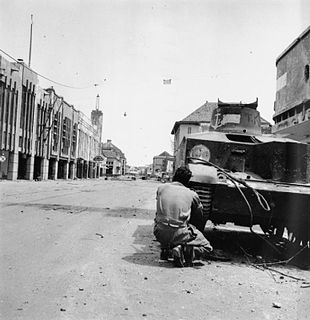 W
WThe Battle of Surabaya was fought between regular infantry and militia of the Indonesian nationalist movement and British and British Indian troops as a part of the Indonesian National Revolution against the re-imposition of Dutch colonial rule. The peak of the battle was in November 1945. The battle was the largest single battle of the revolution and became a national symbol of Indonesian resistance. Considered a heroic effort by Indonesians, the battle helped galvanise Indonesian and international support for Indonesian independence. 10 November is celebrated annually as Heroes' Day.
 W
WThe third Sjahrir Cabinet was the fourth Indonesian cabinet. It served from October 1946 to June 1947, when it fell due to disagreements related to implementation of the Linggadjati Agreement and subsequent negotiations with the Dutch.
 W
WThis is the Timeline of Indonesian National Revolution (1945–1950)
 W
WThe State of East Sumatra was established by the Netherlands after the reoccupation of North Sumatra in July, 1947, during the first of the Dutch "police actions" against the fledgling Republic of Indonesia. In 1949, as part of a peace deal that concluded the Indonesian National Revolution, it joined the United States of Indonesia, of which the Republic was also a component state. In August, 1950, it was absorbed into the Republic as part of the province of North Sumatra. The area covered by the former state included the present-day regencies of Langkat, Deli Serdang, Serdang Bedagai, Karo, Simalungan, Batubara and Asahan, together with the cities geographically within those regencies.
 W
WVice Presidential Edict No. X was an edict issued by Indonesian Vice-president Mohammad Hatta on 16 October 1945 which gave the Central Indonesian National Committee (KNIP), initially a purely advisory body, the authority to become the legislative body of the government.